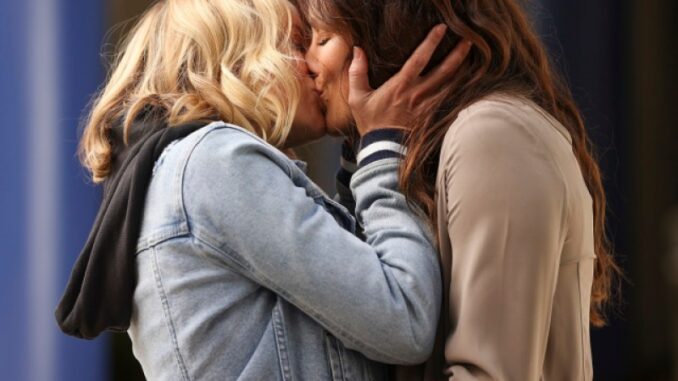
Our Gay Hearts May Break, But They Mend Again, Such Is the Way of Shondaland
Shondaland, the television empire crafted by the inimitable Shonda Rhimes, is a world painted in vibrant hues of ambition, betrayal, and, perhaps most importantly, love. It’s a realm where powerful women navigate treacherous landscapes, political machinations play out in the shadows, and medical emergencies test the limits of human endurance. But beneath the high stakes drama and crackling dialogue, lies a commitment to representation, particularly within the LGBTQ+ community. And, true to life, the path to that representation is rarely smooth. Our gay hearts are often subjected to the very same emotional wringer as our straight counterparts – broken, shattered, and seemingly beyond repair. But, within the comforting, often frustrating, embrace of Shondaland, those hearts eventually find their way to mending, showcasing a resilience and hope that resonates deeply with queer viewers.
The breaking of a queer heart in Shondaland often comes with a familiar sting of authenticity. Consider Callie Torres and Arizona Robbins, the iconic couple from Grey's Anatomy. Their relationship was a landmark for lesbian visibility on mainstream television, offering viewers a complex portrayal of love, commitment, and the challenges of parenthood. We watched them build a life, navigate careers, and fight for their family. But their love story, like many real-life relationships, was also riddled with imperfections. From Arizona's struggle to come to terms with her amputation after the plane crash to Callie's initial reluctance to have children, their relationship was constantly tested. Ultimately, their differences proved too great, culminating in a gut-wrenching divorce that left the fanbase devastated. This wasn't just a convenient plot device; it was a painful, honest depiction of the complexities of long-term relationships, regardless of sexual orientation. Their breakup was a testament to the idea that representation isn't about sanitizing queer love, but about showing its multifaceted nature, including its potential for heartbreak.
The trauma inflicted on queer characters often stems from societal pressures, internal struggles, or the harsh realities of navigating a world that isn't always accepting. How to Get Away with Murder’s Oliver Hampton, portrayed with endearing vulnerability by Conrad Ricamora, experienced this firsthand. His HIV diagnosis was a significant moment, not only for representation but also for its raw and realistic portrayal of living with the virus. The fear, the stigma, and the emotional toll were palpable. His relationship with Connor Walsh, while passionate and supportive, was also tested by this revelation. The constant fear of transmission, the social judgment, and the internal anxieties all threatened to unravel their bond. The breaking point, the moments where Oliver felt isolated and vulnerable, were painfully relatable to many queer viewers who have faced similar challenges in their own lives.
However, the beauty of Shondaland lies in its commitment to demonstrating that even the most broken hearts can mend. The healing process is rarely instantaneous or painless. It requires time, self-reflection, and often, the support of a chosen family. Callie, after the divorce, eventually found happiness with a new partner and a fresh start in New York. Though the pain of losing Arizona lingered, she found a path forward, proving that even after profound heartbreak, life – and love – can continue. Oliver, with Connor's unwavering support, learned to navigate his diagnosis, becoming an advocate for HIV awareness and living a fulfilling life. Their relationship, though scarred, ultimately grew stronger through the adversity, illustrating the power of resilience and the importance of finding love and acceptance within oneself and within a supportive community.
Shondaland doesn't shy away from the messy realities of life, including the heartbreak that often accompanies love, loss, and identity. But it also provides a crucial counterpoint: the hope that healing is possible, that love can be found again, and that even after the most devastating of experiences, queer individuals can find strength, joy, and ultimately, a sense of belonging. The cyclical nature of love and loss, the breaking and mending, reflects the human experience in its entirety. By showcasing the full spectrum of emotions experienced by LGBTQ+ characters, Shondaland provides not just representation, but also validation and a powerful message: Our gay hearts may break, but they mend again, because such is the way of life, and such is the way of the world that Shonda Rhimes has created. It's a world where tears are shed, battles are fought, and ultimately, love, in all its messy, imperfect glory, prevails.
